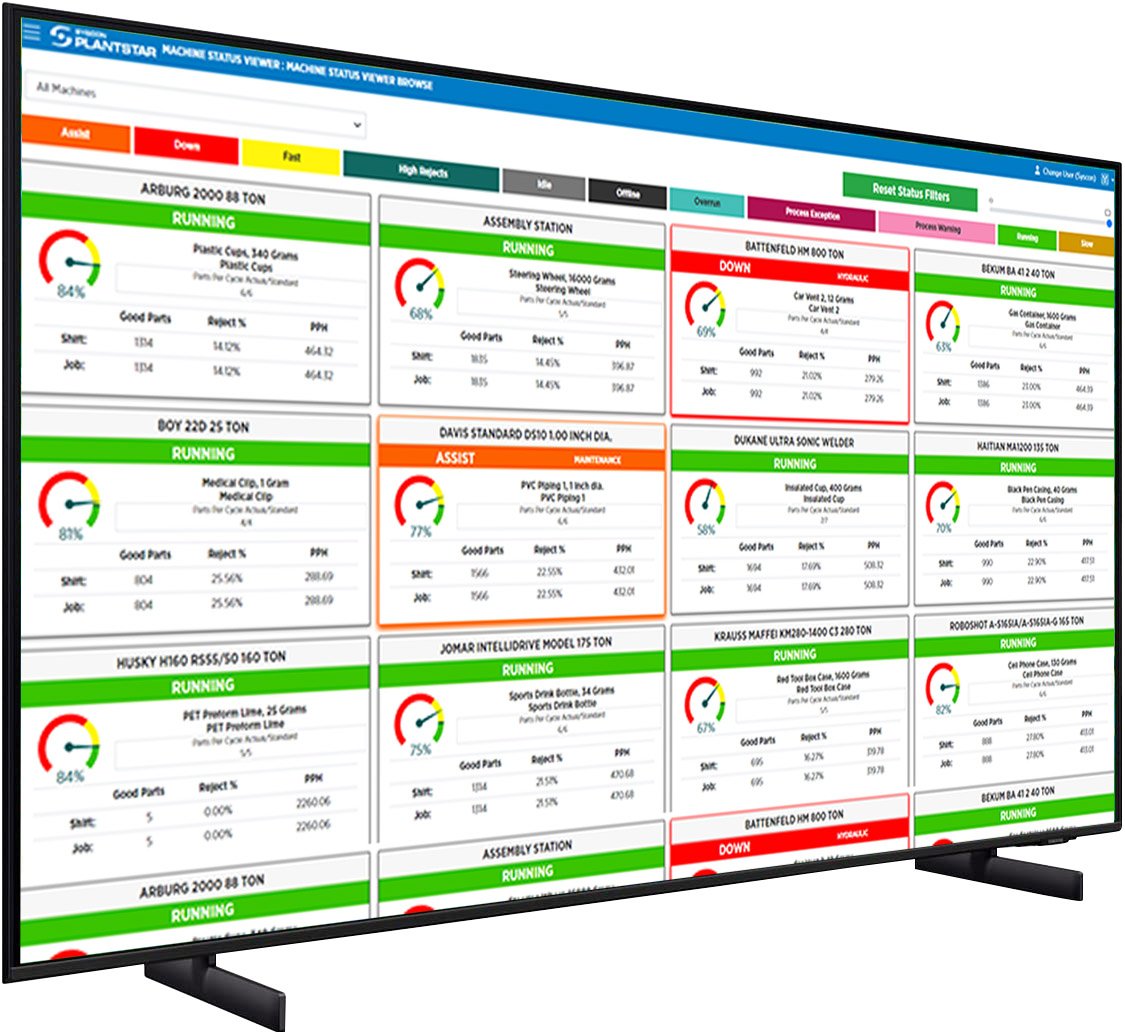PlantStar BLOG
How to Get More From Your Company’s Manufacturing Execution System
Sep 16, 2022 4:30:00 PM / by PlantStar Team

Manufacturing has long been an industry where corporations try to maximize their Return on Investments (ROI) because of its intense competitive pressure. However just because a supplier invests in new technology, like a Manufacturing Execution System (MES), that step does not mean that they will automatically reap its rewards. In addition to making the purchase, they need to break down data silos, establish company standards, and empower employees through training and documentation, to maximize their potential.
Manufacturing plants have more information at their disposal than ever before because of recent technical advances, like the Internet of Things, mobile, and cloud. While companies collect industrial data in unprecedented numbers and have numerous data analytics tools, few manufacturing operations leverage them to improve their supply chain and manufacturing processes. In fact, only 30% analyze their data, and a minuscule 2% act on it. After spending so much money on technology, here are five reasons why organizations do not better utilize it to enhance the production process.
Lack of Visibility
Companies generate a lot of data, but that is only the first step in the process of leveraging it. Information segregation is a big challenge for most businesses. Data generation is often siloed, used in one department extensively but essentially invisible to others. As a result, employees fixate on their little piece of the process and seldom see the big picture and how their actions impact others, which harms the business.
Manufacturers want to use data analytics to move from reactive oversight (making changes after a problem arises) to proactive management where they adjust as problems arise. The quality assurance team would find it helpful to know that an IoT centrifuge sensor has been running hot in the last few days, but they do not. Why? That data is not typically germane to their work and is something they track. Also, there are so many data points generated that many actionable items get lost in the noise. Because executives lack access to data needed to make informed decisions. they miss out on opportunities to improve the business.
Lack of Consistency
Manufacturing applications sprout up to address a pain point that a group in the company feels at a particular time. Each software supplier builds its solutions in a unique way. The tools used to create the code are usually not the same. Consequently, each department has applications that collect common information, such as a part number but identify it in a unique manner.
As a result, the process of connecting the supply chain to the manufacturing floor is challenging because translators are needed among the various applications. In some cases, a vendor, like PlantStar, has built bridges to other enterprise systems, such as enterprise resource planning (ERP) and product lifecycle management (PLM). But in many cases, such links are missing. Therefore, the onus falls on the user to make and maintain the links. Often, they lack the needed expertise and need help from a third party.
Lack of Documentation
MES applications are complex solutions with millions of lines of code. The interconnections among the different components are many, varied, and constantly evolving. Companies constantly make adjustments, so the system supports their business process more efficiently. Developers need to know how these systems are built, what their interfaces look like, what information is generated, and what the latest iterations are.
Documentation performs this task. However, many businesses invest little in this area. Companies often do a poor job of documenting how their system works, leading to errors and inefficiencies.
Lack of Governance and Standards
Suppliers come in all shapes, and sizes, and work in different ways. Typically, each business unit within the organization functions in a slightly different manner, taking on the personality of the individuals running that area. That approach creates challenges when organizations try to centralize information. They need to put policies in place at the corporate level that will ensure consistency when one area uses information generated by another. This step often requires the formation of a cross-functional committee, ideally with input from top management, and the development of company standards.
Lack of Training
Individuals do not know what they do not know. Managers understand how to use local applications but may not comprehend how work is done in other areas. Therefore, they need to be exposed to those processes. Companies need to provide adequate training on how to understand what information is in their MES system and how it might help them improve their part of the business. The training needs to be ongoing in order for employees to fully leverage the system’s capabilities.
MES solutions have tremendous potential and can bring about transformative changes in manufacturing production. Currently, few companies are in a position to maximize their return on this information. Improving system consistency, putting standards in place, and training employees help them close the gap. Taking these steps enables them to streamline asset tracking and asset management, boost uptime with predictive analytics, and improve the business.

Schedule A Demo
Topics: Manufacturing Execution Systems
Subscribe to Email Updates
Posts by Topic
- Manufacturing Execution Systems (38)
- manufacturing solutions (16)
- MES 101 (13)
- Industry 4.0 (11)
- improve efficiency (10)
- Plastic Molding (9)
- Plastics Technology (9)
- mes software (9)
- mes solutions (9)
- MES hardware (8)
- Shop Floor Production (8)
- digital transformation (7)
- Reduce scrap (6)
- data-driven-decisions (6)
- Medical molding (5)
- lean manufacturing (5)
- process monitoring (5)
- product quality (5)
- lights-out manufacturing (4)
- manufacturing dashboard (4)
- production monitoring (4)
- ERP integration (3)
- Shop Floor Safety (3)
- supply chain management (3)
- Injection Molding Technology (2)
- defect collection (2)
- machine mes (2)
- process variables (2)
- digital strategy (1)
- labor gap (1)
- throughput (1)


